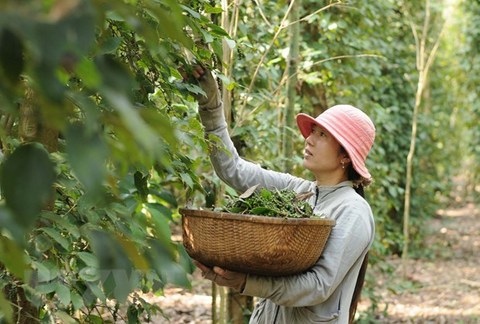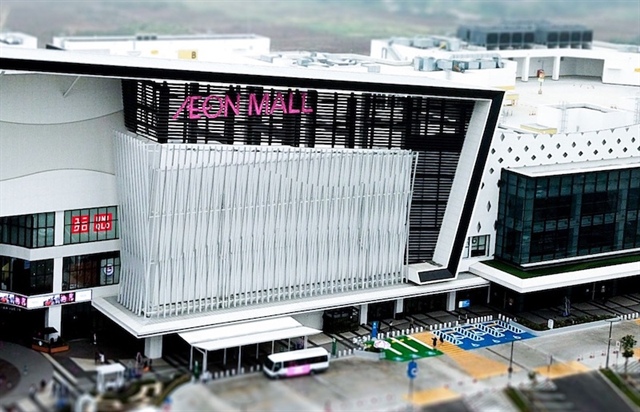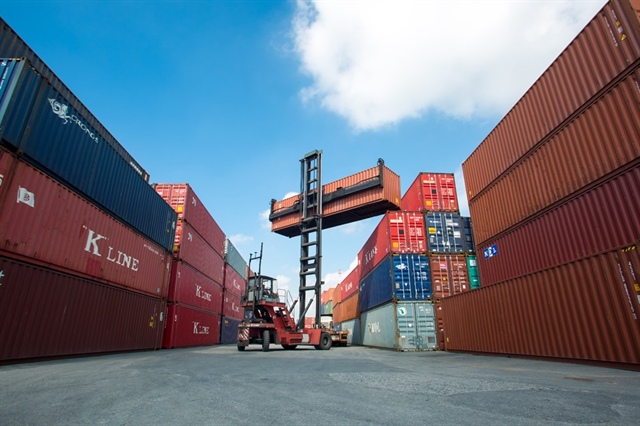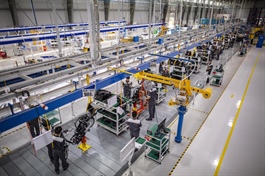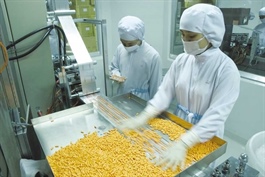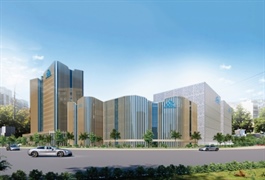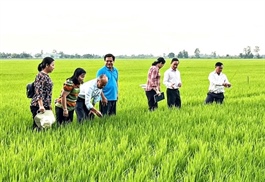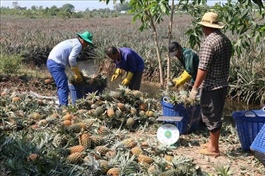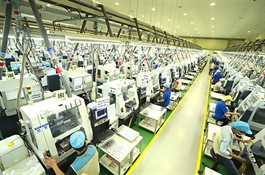Agro-exporters urged to align with modern standards
Agro-exporters urged to align with modern standards
Exporters of agricultural products are ensuring strict compliance with plant quarantine and food safety regulations for sustainable market access.
According to the Plant Protection Department under the Ministry of Agriculture and Environment, China approved an additional 829 planting area codes and 131 packaging facility codes for Vietnamese durian in May.
This follows the submission of dossiers for over 1,600 planting areas and 300 packaging facilities to the General Administration of Customs of China.
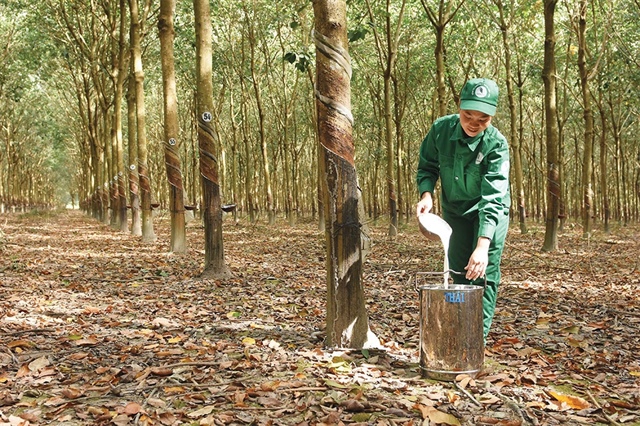
Agro-exporters urged to align with modern standards, Photo: Le Toan |
Vietnam now has just under 1,500 planting areas and almost 200 packaging facilities eligible to export durian to China. Authorities have urged localities and businesses to seize this opportunity while ensuring strict compliance with China’s plant quarantine and food safety regulations for sustainable market access.
The move by China is expected to support export turnover and shows the importance of controlling product quality.
This should contribute to realising the billion-dollar export turnover target for durian. Vietnam’s durian export turnover in 2024 reached a record of more than $3.2 billion, up 43.2 per cent from the previous year and also up 28 times in the past five years.
Dang Phuc Nguyen, general secretary of the Vietnam Fruit and Vegetable Association, said, “Tightening plant quarantine and food safety regulations is an important requirement to avoid unexpected situations. The pursuit of high productivity in farming, coupled with inadequate input control of an agricultural product, can inadvertently introduce banned substances into the production chain, leading to violations of non-tariff barriers. This creates disadvantages for the export process.”
Additionally, challenges with non-tariff barriers can stem from a lack of comprehensive supply chain control, from input materials to farming practices and post-harvest processing.
“Lax management and use of growing area codes and packing facility codes can result in a single non-compliant shipment damaging the reputation of an entire region or even the country. This underscores the urgent need to establish a robust quality monitoring system from the ground up and strengthen testing at agricultural production facilities,” Nguyen added.
Nguyen Thi Thanh Thuc, chairwoman and general director of Auto Agri Software Technology JSC, said, “One of the non-tariff barriers applied to the agricultural sector is technical standards and sanitary and phytosanitary regulations, such as requirements for pesticide residues, banned substances, and microbial testing. We need to be prepared in advance.”
A representative of the Department of Market Management Operations, under the Ministry of Industry and Trade, said that it is also important to prevent the trade of counterfeit fertilisers and pesticides.
“For fertilisers, common violations in production and trading include producing fertilisers with one or more quality indicators that do not meet the declared specifications or labelling, infringing on intellectual property rights, and producing or trading fertilisers without a valid circulation permit in Vietnam,” said the representative.
For pesticides, labelling violations include images, text, or symbols that misrepresent the product, misleading consumers about its quality. Accompanying documents may lack or inaccurately reflect mandatory information. In terms of quality, some products have active ingredients lower than declared in the dossier or on the label, with some reaching only 70 per cent or less of the claimed content. Others contain substances not permitted or listed in Vietnam’s banned pesticide directory.
Preventing the trade of counterfeit fertilisers and pesticides will help farmers to remove risks related to non-tariff barriers. Besides that, several companies are applying technology to control the quality of agricultural products at the cultivation stage.
“We are applying technology to monitor soil quality and provide early warnings of risks before the harvest season,” said Nguyen Do Dung, general director of Enfarm Agricultural Technology Company in the Central Highlands region. “This solution identifies high-risk areas, enabling soil improvement measures to ensure fruit quality and enhance the value of agricultural products.”
But the response has been too slow. Agricultural products generate billions of US dollars per hectare, yet spending just a few dollars on soil testing is considered challenging due to a lack of funding.
“With the latest technology, we can identify biological risks and soil characteristics early using data and AI. This reduces the number of required test samples by up to 70 per cent, saving money and accelerating the process. We have developed a digital platform to streamline sampling, analysis, and result delivery, replacing manual methods,” Dung added.
|
Vietnam’s total agro-forestry-fishery trade is estimated at $57 billion in the first half of this year, with exports reaching $33.5 billion, up 14.3 per cent on-year, according to the latest statistics published by the Ministry of Agriculture and Environment. The ministry targets achieving $14-15 billion in Q3, and accelerating exports in Q4 by leveraging the rising demand for agricultural products during the end-of-year holidays, aiming for a strong growth target of $16 billion. Key commodities including coffee, tea, pepper, cashews, and rubber. Livestock products are expected to maintain export momentum, contributing significantly to the $65 billion target. The coffee industry recorded a breakthrough performance in the first half of the year, with an estimated export value of $5.5 billion, equivalent to the whole year’s target. Although Vietnam’s coffee production is primarily concentrated in the harvest season from December to April of the following year, limiting supply in the second half, the sector could reach $7.5 billion by year-end, up 36.9 per cent on-year. Coffee will continue tapping into new trade opportunities, particularly from the EU which is seeking bolster cooperation in Asia and the Middle East, while shifting to large robusta consumers like China, Japan, South Korea, the Philippines, and Thailand. In the long term, the Northeast Asian region is evaluated as a key market that could compensate for any decline in US market share.Source: Ministry of Agriculture and Environment |
- 09:40 15/07/2025



